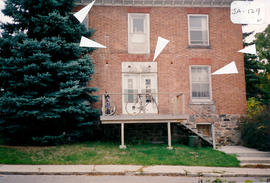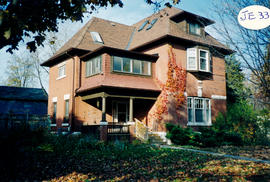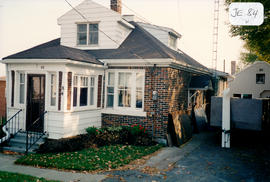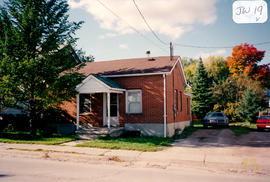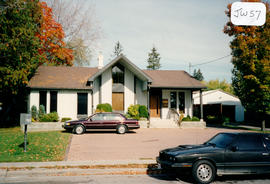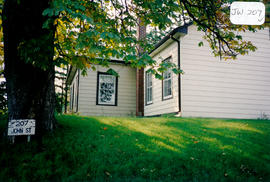129 James Street - The Old Presbyterian Manse
- CA BWGPL GJ-HB-2017-04-01-20
- Item
- 1995
Part of George Jackson fonds
The Old Presbyterian Manse is located at 129 James St. (on the northeast corner of James and Essa Streets). It was built around 1875 in the Neoclassical style. It was being used as a manse at the turn of the century and has since been converted into duplex units.
The two-storey, rectangular building has a symmetrical façade, a centre hall plan and a medium-pitched, gable roof. It has large window openings, high floor to ceiling heights, and large, 6/6, double-hung windows. The original entrance probably had sidelights and a transom. There appears to have been a broad verandah at the front entrance and identical chimneys at both ends of the gable roof at one time. The building has sculptured, curvilinear, soffit brackets, solid brick construction (Flemish bond), and an exposed, stone foundation. According to the 2000 inventory, the existing entrance and many windows and doors do not reflect the original design intent. It also notes that the existing duplex unit arrangement suggests major interior modifications. (1, 3)
George Jackson

